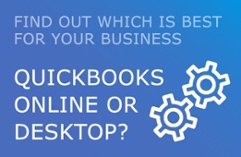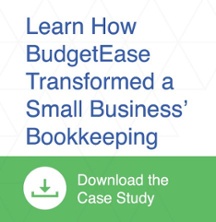This is part one in our blog series "Transitioning to eCommerce: A Bookkeeper's Perspective." Read part two here.
You have a great idea for an eCommerce business. Our eCommerce clients are doing amazingly well. Here are 4 things we see to guarantee smooth sailing when starting an eCommerce business:
 1. Open a Separate Bank Account for Your New Business
1. Open a Separate Bank Account for Your New Business
- Even if you haven’t incorporated, you can start a new account with your social security number.
- Use your existing bank for convenience unless the cost of an account is too high.
- Go for a free account if possible.
- Get a debit card for the account.
- Sign up for online access.
- Use this account for all your new business transactions.
- If you do use another account for some transactions, track those transactions so they can be consolidated into your financial software
2. Keep Cost Low
There is little to no overhead or start-up costs with an eCommerce business. Most of our eCommerce clients don’t pay rent, utilities or have large equipment costs. Your biggest expense may be your time and your website.
There are ways to keep the low cost of starting an eCommerce business even lower. Many of our eCommerce clients tested their products and their pricing on Amazon, Etsy or other distributors. Then, once their product had a following, incorporated their offerings into their own website.
Keep your inventory low. To start, you can make smaller batches or hire others to make your product. Consider an arrangement to have your suppliers drop ship your product to your customer directly. Your margin will be a bit smaller but the cost of unsold inventory is even higher.
3. Start with a Process Flow Chart
What is the process from receiving an order online to the money reaching your bank account?
- Use post-it notes to document each step. Make sure you note who is responsible.
- Test each action in the chart to make sure it works. For example, if a vendor is shipping directly to your client, enter the order in QuickBooks (noting drop ship) using a Purchase Order. Send the order to yourself to see if the process is working and determine the amount of time.
- Convert your post-it notes to a procedure and implement it. Look for ways to streamline the process as you implement it.
Check out our Blog about a process we worked on with an eCommerce client.
4. Choose Your Financial Software
The best financial software for your business is one that you will use. Will you open the program often (at least weekly) to see how your business is doing? If your software makes you anxious or is too confusing, you are off to a bad start.
Usually there is not one program that does everything you want it to do. Pick the program that makes you happy and works well with your Flow Chart.
You will need one or more merchant servicer. Many of our clients use PayPal and a second servicer for website sales. Possibly a third for phone orders. Think about:
- The number of transactions you expect to process and the dollar amount of each transaction. Then, estimate the fee you will be paying to determine what service to use.
- The information that your merchant service provides. Is there easy online access? Are the reports easy to follow and understand?
- How will your funds flow into your bank account? Have your merchant fees deducted at the end of the month – not at each transaction. This alone makes your bookkeeping much easier.
- Depending on your volume of transactions, having a merchant servicer that works with your financial software could be a huge time saver. So much so that a slightly higher processing fee is worth it.






